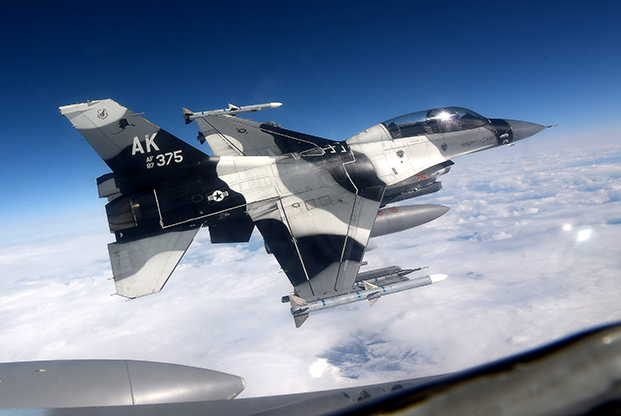
PACAF Commander Gen. Charles Brown, speaking with reporters last week at ASC18, said the Air Force needs to “push the envelope” on its training as part of the National Defense Strategy’s push for great power competition. Air Force photo by SSgt. Jerilyn Quintanilla.
Pacific Air Forces is determining ways to increase its aggressor capability and bolster its range complex as the Air Force brings in more fifth generation aircraft, the command’s boss said.
PACAF Commander Gen. Charles Brown, speaking with reporters last week at ASC18, said the Air Force needs to “push the envelope” on its training as part of the National Defense Strategy’s push for great power competition. This includes improvements to the Joint Pacific Alaska Range Complex, which has 65,000 square miles of available airspace and advanced sensors and simulated threats for USAF and partner aircraft to use in training.
The Air Force needs to keep the range “capable” for its training, and that of partners who come to use it in exercises such as Red Flag-Alaska. The recently signed budget includes funding to improve threat emulators, targets, and decoys to help with this training.
PACAF also is looking at strengthening its available red air capacity, both through its own 18th Aggressor Squadron at Eielson AFB, Alaska, and with the broader Air Force’s push for more contracted red air, Brown said. The Air Force’s request for proposals, released last month, includes contracted adversary air sorties in both Alaska and Hawaii.
Some PACAF units have had limited access to adversary air for training and have had to get more creative in how they train. For example, the F-22s based at JB Pearl Harbor-Hickam, Hawaii, have trained with visiting US Navy aircraft and have been petitioning to bring the Eielson Aggressors down for extended visits for training.